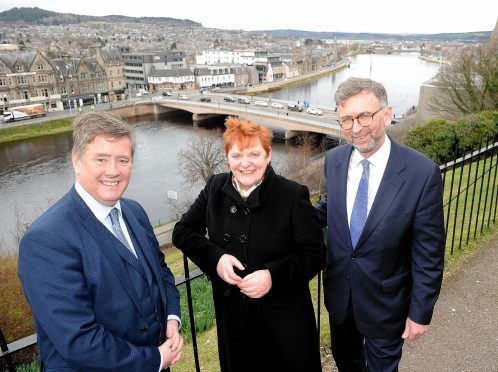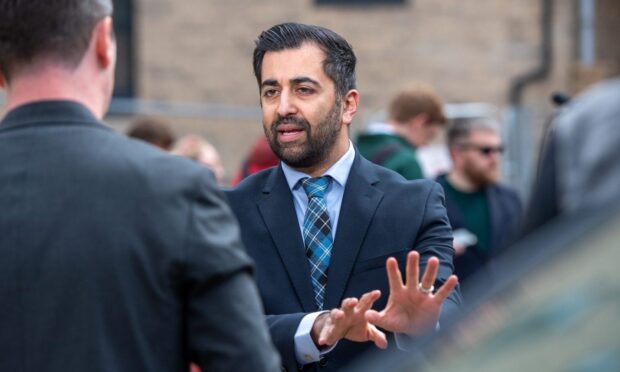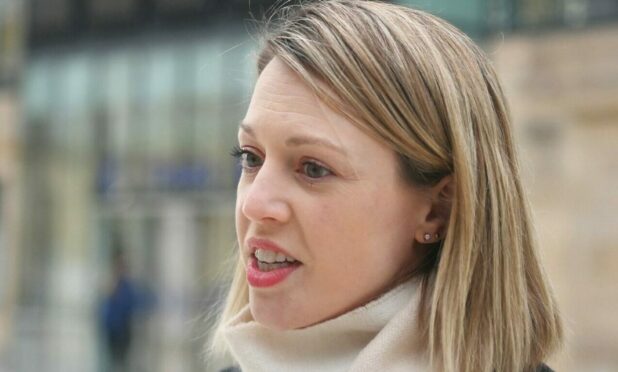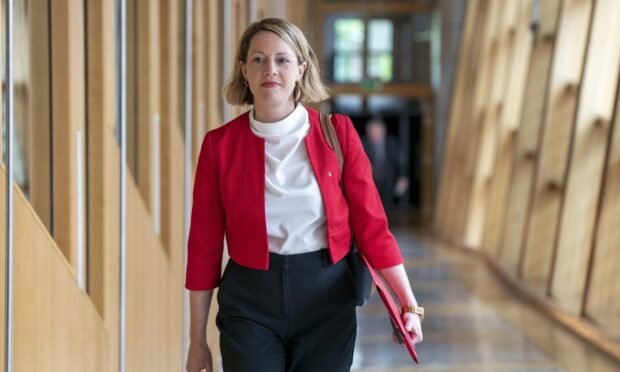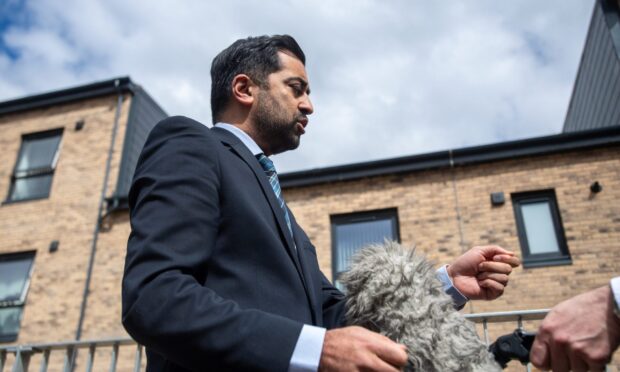An influential group of MSPs has raised “significant” concerns about the roll-out and management of £2.2billion City Region Deals in Aberdeen, Inverness and Glasgow.
In a new report, published today, Holyrood’s local government committee warn of a “confused and cluttered policy landscape” surrounding the lucrative investment packages.
It criticises the “too opaque and too top down” selection of projects featured in each deal, says it is “not clear” who the programme managers are accountable to, and raises doubts that the “overall governance structure is correct”.
And it warns that areas not covered by the agreements – such as Moray, the islands and Argyll – could be “doubly disadvantaged” and treated like a “poor cousin”.
A series of “urgent” recommendations is made by the committee, including that the Holyrood and Westminster governments establish a Scottish City Region Deal Delivery Group to improve transparency and to ensure that risks are assessed and agreed targets are met.
Today, north-east leaders admitted they would like to see the projects including in the Aberdeen deal move forward faster – particularly the transport improvements.
The £826million Aberdeen deal included plans for an oil and gas technology centre, an agri-food and nutrition hub for innovation, a bio-therapeutic hub for innovation, the harbour expansion and key transport projects.
However, concerns have been raised locally in Aberdeen about the release of funds and scheduling of projects.
Last night, Aberdeenshire Council leader Jim Gifford said the delivery of the improved links between the city and other destinations were moving at a “glacial pace”.
“Some projects are being delivered well – the oil and gas technology centre, for example – but others could be moving faster, specifically the transport side of things which is outwith our control.
“Certainly, from our point of view we’re happy with things.
“We just want to forge forward and perhaps move more quickly.”
Today’s report states: “The committee is not convinced that the process for selecting projects is currently working in the way that it should do.
“The process is too opaque, with not enough information published to explain why certain projects were chosen or otherwise.
“We are also of the view that the process is still too ‘top down’ at local authority level despite some of the efforts to consult and engage with local people and businesses.”
Chairman Bob Doris MSP said: “While it’s still very early days in the City Region Deals lifespan, it’s not clear how other towns and the more rural and remote areas of Scotland will benefit from these deals.
“There is also a risk that some parts of Scotland could miss out or lose out on the benefits that these projects may bring, and that other initiatives are treated as the poor cousin in comparison.”
Responding to the report, Economy Secretary Keith Brown said: “We thank the committee for its interest in city deals and for this report and we will consider their recommendations thoroughly.
“City Region Deals represent an important opportunity for inclusive economic growth and to forge new collaborations between the Scottish Government, the UK Government and local authorities and their regional partners.”
Stephen Flynn, the SNP group leader at Aberdeen City Council, said transparency will be a key part of delivering Aberdeen’s deal.
He said: “When we’re talking about such vast sums of money, it is essential that there’s a transparent process in place and it is important to note that Keith Brown will be considering the committee recommendations in full – but these are ultimately potential lessons for the future, and shouldn’t necessarily detract from the progress made in the city to date.”
A UK Government spokesman said: “We welcome the committee’s scrutiny and agree that UK City Deals have brought – and will continue to bring – significant investment into Scotland, supporting local priorities and strengthening the country’s economy by driving productivity, wages and growth.
“The UK Government is committed to delivering City Region Deals for each of Scotland’s cities and we have committed over £1 billion investment so far.
“There are other local authority areas keen to maximise the benefits of the growth deals programme and we will continue to work with the Scottish Government and local partners as proposals develop. We need to work together closely as we roll out the UK’s ambitious Industrial Strategy and deliver for the people of Scotland.”
City Deals were introduced by the UK Government in 2011, with the first wave of eight agreements in England announced in July 2012, followed by a further 18 in 2013 and 2014.
In August 2014, the Glasgow and Clyde City Region Deal became the first such package to be signed off in Scotland, followed by Aberdeen in November 2016 and Inverness in January 2017.
At the same time as the signing of the Aberdeen City Region, Holyrood announced it would invest to improve infrastructure in the area.
The pledge included funding for better rail links between Aberdeen and the Central Belt, including an upgrade to the line at the Montrose basin.
Further installments of the cash would be spent on A90 Aberdeen to Fraserburgh improvements and a digital infrastructure overhaul.
Last month, Aberdeen South MP Ross Thomson – who was a city councillor at the time of the deal – said the “bulk” of the proposed spending was yet to materialise.
“The improvements to rail links between Aberdeen and the Central Belt in particular appears to have been kicked in to the long grass by ministers,” he said.
And last night, Aberdeenshire Council’s opposition leader Richard Thomson said more needed to be done to deliver for the north-east.
He said: “The governance and content of the Aberdeen City Region Deal always felt as if it was put together on a rushed timescale to suit the needs of the UK Government.
“While there’s nothing in the deal or the additional £254m ‘side deal’ funded exclusively by the Scottish Government that is not good and worthwhile, if there’s to be a City Region Deal MKII, it needs to deliver on other aspects of our shared regional economic strategy to help embed a lasting and sustained prosperity throughout the north-east.”
The £315million package for Inverness featured the creation of a north inovation hub, developing Inverness Castle as a key tourist destination, building a Longman roundabout flyover and creating a new industrial estate at the former Longman dump.
A viewing platform has already been opened at the castle, while investment has also been made in the Inverness West Link bypass, which has just opened.
The city centre has seen the Ness WiFi scheme introduced, giving the public free access to the internet, and this is to be rolled to “tourism towns” throughout the region.
Town centres recommended for the free Wi-Fi programme are Alness, Aviemore, Dingwall, Dornoch, Drumnadrochit, Fort Augustus, Fort William, Invergordon, Nairn, Portree, Tain, Thurso, Ullapool and Wick.
And Newton Rooms, designed to get young people interested in science and technology subjects, are to be opened in Caithness and Fort William, as well as Inverness Campus.
Other developments being brought forward include affordable housing, with one scheme already under way in the city’s Raining’s Stairs area.
In December 2016, the Scottish Government pledged to work with Moray Council to prepare a deal – potentially worth tens of millions of pounds – for the region.
By June last year, the council had formerly backed the bid with a creation of a massive £12million business park at Barmuckity on the outskirts of Elgin put at the heart of the bid.
But there was disapointment for the region in Chancellor Philip Hammond’s November budget when the much hoped-for deal failed to materialise.
Tory insiders’ hopes that the chancellor would endorse the struggling region’s City Deal-style package were dashed after the Treasury ruled it needed more work.
Local politicians said, however, that they were confident the scheme would get the nod in the next budget.
